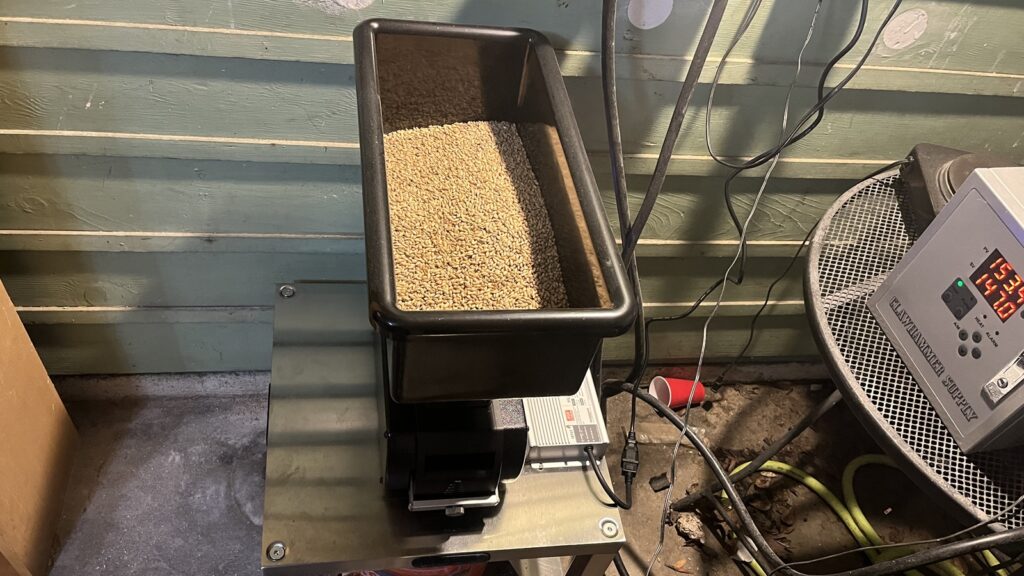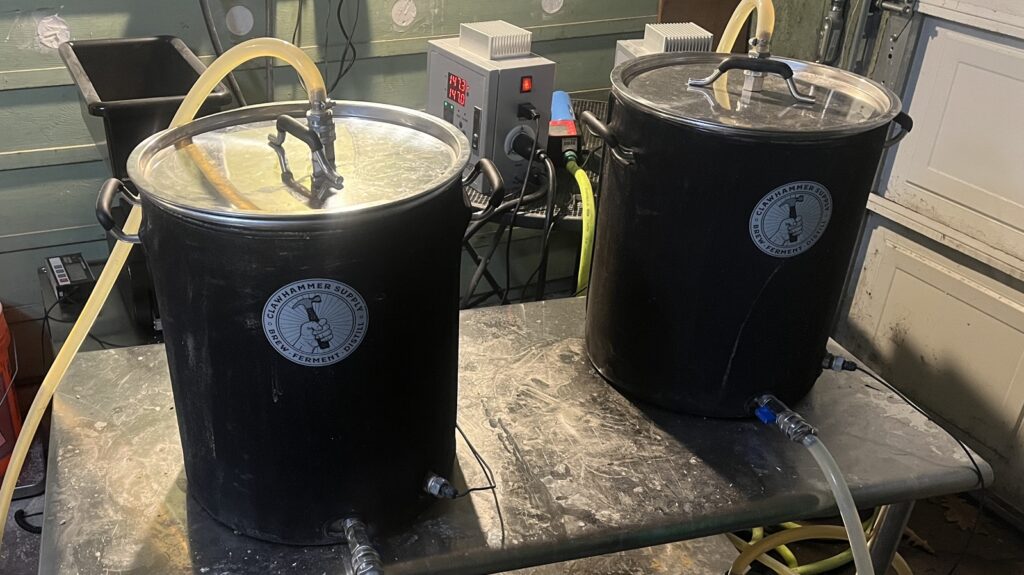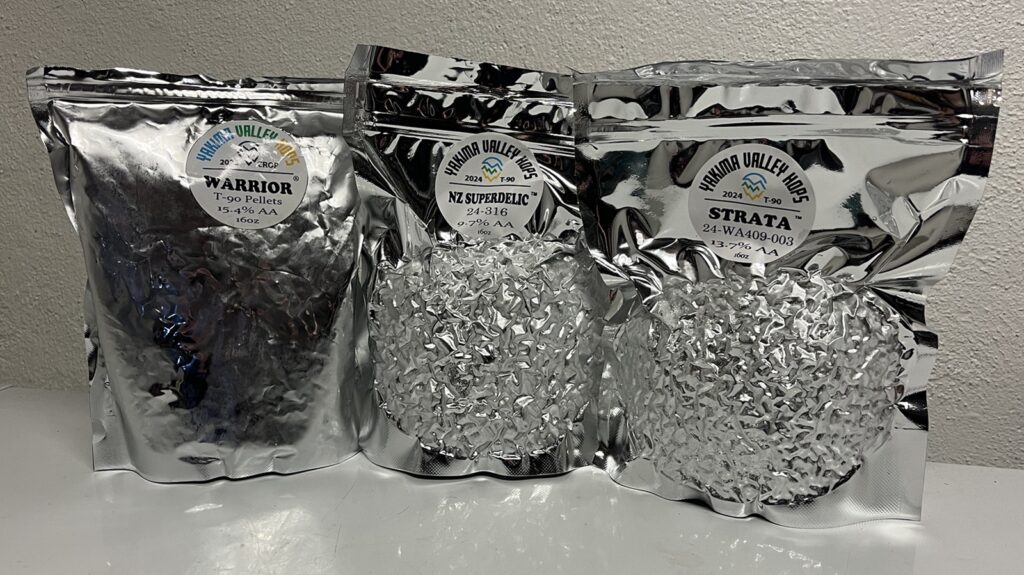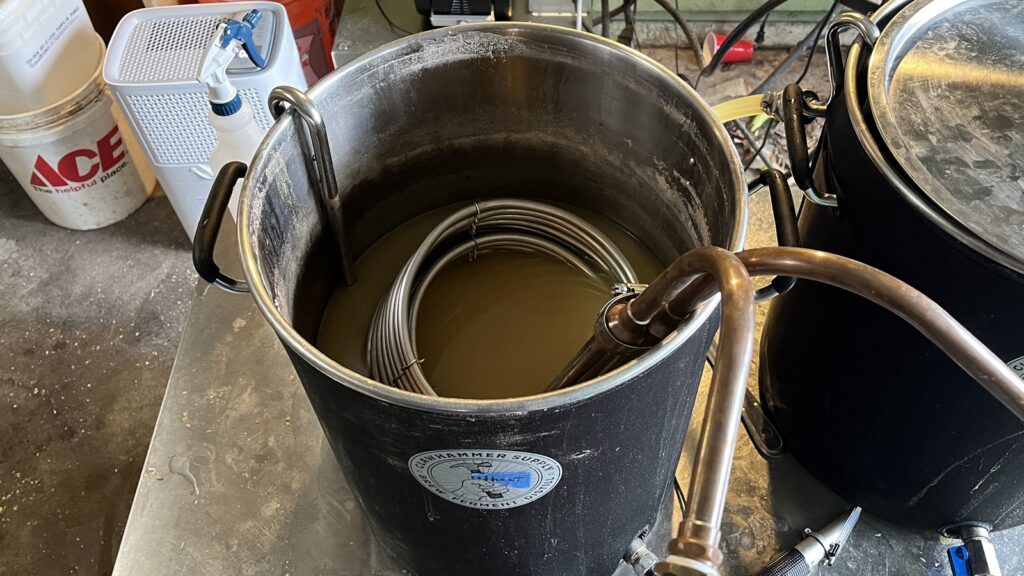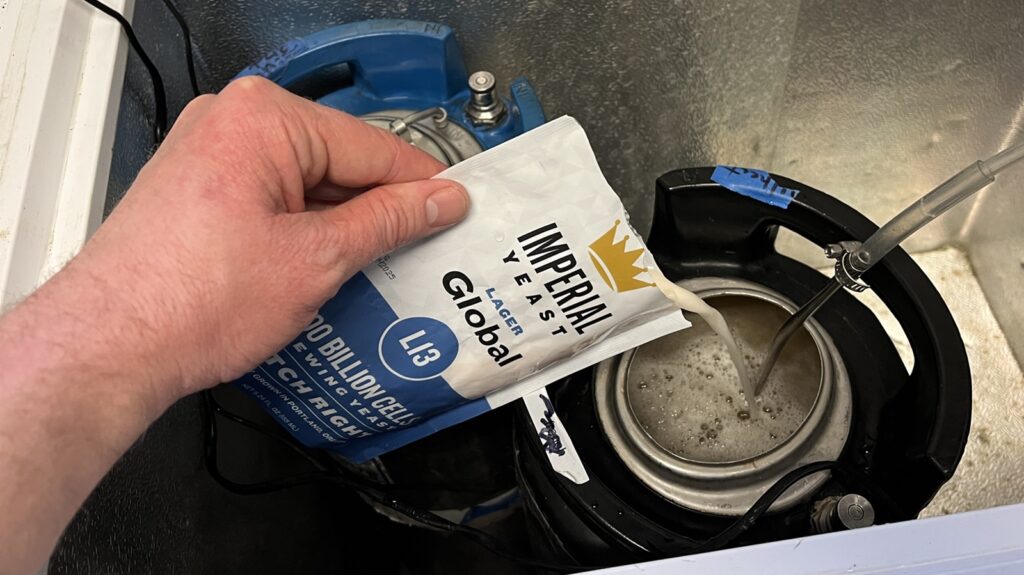Author: Jordan Folks
Etymologically, the word “beer” is thought to stem from the Anglo-Saxon term “baere,” which translates to barley, and hence it makes sense that barley is the primary source of fermentables in beer. However, it’s not the only cereal grain capable of being used in the brewing process. Wheat malt is another very common brewing grain, used in higher proportions for styles like Weissbier and Witbier, while many rely on smaller amounts in various styles to enhance certain desirable characteristics.
Due to its higher protein content as compared to barley, wheat malt is widely believed to positively contribute to both foam quality and mouthfeel when making up 5 to 20% of the grain bill. Moreover, while higher usage rates can impart a flavor some describe as doughy and somewhat tart, lower amounts have minimal flavor impact, particularly in more characterful beers, and it doesn’t seem to influence clarity much either.
Over the last couple decades, conceptions of IPA have evolved quite a bit – whereas early versions tended to be more malty, grain bills for modern “West Coast” IPA have gotten progressively leaner, with many brewers opting to used only Pilsner malt to ensure hops stay in the spotlight. I’m certainly in the latter camp, though a trick I’ve adopted from one of the progenitors of West Coast IPA, Societe Brewing Company, is to include a portion of wheat malt to add a touch of body to an otherwise bone-dry beer. Curious of just how notable of an impact this trick was having, I designed an xBmt to test it out.
| PURPOSE |
To evaluate the differences between a West Coast IPA made with 20% wheat malt and one made with all Pilsner malt.
| METHODS |
For this xBmt, I designed a modern West Coast IPA recipe that relied on a blend of novel hop varieties and products. While one batch contained 20% wheat (when the dextrose wasn’t accounted for), the other was made with additional Pilsner malt in its place. Big thanks to F.H. Steinbart for hooking me up with the malt for this batch!
Waving In The Wind
Recipe Details
| Batch Size | Boil Time | IBU | SRM | Est. OG | Est. FG | ABV |
|---|---|---|---|---|---|---|
| 5.5 gal | 60 min | 59.7 | 3.5 SRM | 1.064 | 1.009 | 7.22 % |
| Actuals | 1.064 | 1.009 | 7.22 % | |||
Fermentables
| Name | Amount | % |
|---|---|---|
| Pilsner | 10 lbs | 76.19 |
| Wheat Malt OR Additional Pilsner Malt | 2.5 lbs | 19.05 |
| Dextrose | 10 oz | 4.76 |
Hops
| Name | Amount | Time | Use | Form | Alpha % |
|---|---|---|---|---|---|
| Warrior | 14 g | 60 min | Boil | Pellet | 13.9 |
| Strata | 14 g | 10 min | Boil | Pellet | 13.6 |
| Superdelic | 113 g | 10 min | Aroma | Pellet | 9.5 |
| Strata | 57 g | 10 min | Aroma | Pellet | 13.6 |
| Superdelic | 113 g | 2 days | Dry Hop | Pellet | 10.5 |
| Krush LUPOMAX | 85 g | 2 days | Dry Hop | Pellet | 17.3 |
| Strata | 57 g | 2 days | Dry Hop | Pellet | 12 |
| Citra SPECTRUM | 20 g | 2 days | Dry Hop | CO2Extract | 12.3 |
Miscs
| Name | Amount | Time | Use | Type |
|---|---|---|---|---|
| Amylase Enzyme | 1 g | 0 min | Primary | Other |
Yeast
| Name | Lab | Attenuation | Temperature |
|---|---|---|---|
| Global (L13) | Imperial Yeast | 77% | 46°F - 55.9°F |
Notes
| Water Profile: Ca 98 | Mg 4 | Na 10 | SO4 173 | Cl 41 |
Download
| Download this recipe's BeerXML file |
After collecting the full volume of water for two 5 gallon/19 liter batches, adjusting them to my desired profile, and getting them heating up, I milled the grain.
When he waters were properly heated, I incorporated the grains and set the controllers to maintain my desired mash temperature of 147°F/64°C.
During the mash rests, I weighed out the kettle hop additions.
Once the mashes were finished, I collected the worts and proceeded to boil each for 60 minutes, adding hops at the times listed in the recipe. When the boils were complete, I chilled them with my JaDeD Brewing SS Coil Hydra.
Refractometer readings showed the worts were at a similar OG.

After transferring identical amounts or wort from either batch to separate fermentation kegs, I pitched two packs of Imperial Yeast L13 Global into each one.
The beers were left to ferment at 59°F/15°C for 2 weeks before I added the dry hops.
The following day, I took hydrometer measurements showing similar levels of attenuation.

At this point, I cold crashed the beers overnight then pressured transferred them to CO2 purged serving kegs along with gelatin fining. After 2 weeks on gas in my keezer, the beers were carbonated and ready for evaluation.
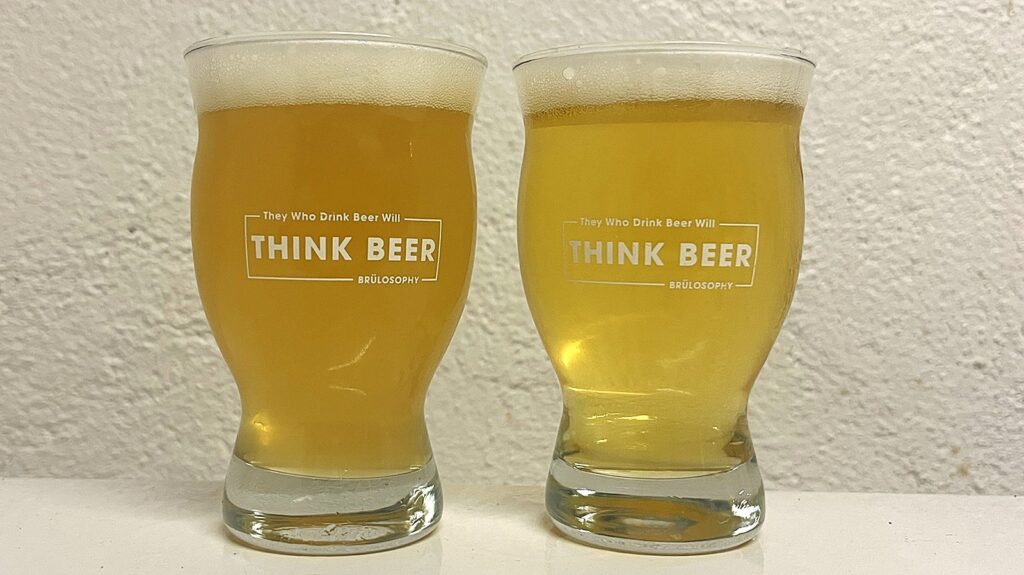
| RESULTS |
A total of 22 people of varying levels of experience participated in this xBmt. Each participant was served 1 sample of beer made with wheat malt and 2 samples of the beer made without wheat malt in different colored opaque cups then asked to identify the unique sample. While 12 tasters (p<0.05) would have had to accurately identify the unique sample in order to reach statistical significance, only 9 did (p=0.29), indicating participants in this xBmt were unable to reliably distinguish a West Coast IPA made with 20% wheat malt from one made with all Pilsner malt.
My Impressions: Out of the 5 semi-blind triangle tests I attempted, I correctly identified the odd-beer-out just once. While clearly unable to tell them apart on aroma, flavor, and mouthfeel, in sighted comparisons, the version made with wheat was noticeably hazier with better head retention, whereas the beer without wheat was clearer with less foam. Either way, both were excellent West Coast IPAs with huge tropical hop bouquets and minimal malt character with a refreshingly light body.
| DISCUSSION |
While barley is by far the most used cereal grain to make beer, there are a few others brewers rely on for fairly specific purposes, wheat being one that’s widely believed to improve mouthfeel, body, and foam. This can be especially important for recipes that are expected to attenuate enough to result in a dry and thin beer, for example when simple sugars are used. Interestingly, tasters in this xBmt were unable to reliably distinguish a West Coast IPA made with 20% wheat malt from one made with all Pilsner malt.
Seemingly, the most plausible explanation for this result is that not enough wheat malt was used to achieve the desired effects, though 20% falls near the top of the recommended usage rate for styles like IPA. The one area where these beers did obviously differ was appearance, and while the one made with wheat did have slightly better foam quality, it was also hazier, which isn’t a desired feature of West Coast IPA.
I’ve used wheat in many past batches of West Coast IPA and accepted it was having some positive impact, but this experience led me reevaluate my convictions. As cool as I am with modern Hazy IPA, I strongly prefer my West Coast IPA to be clear, hence my use of gelatin in these beers. However, that didn’t have much of an impact on the version made with wheat malt, and even after a month of cold conditioning, it still maintained a stable haze. Even though the wheat malt did seem to have slightly better foam quality, I’ll be sticking to 100% Pilsner malt for future batches of West Coast IPA, especially considering the batch made without wheat was not overly thin and still had decent foam quality.
If you have any thoughts about this xBmt, please do not hesitate to share in the comments section below!
Support Brülosophy In Style!
All designs are available in various colors and sizes on Amazon!
Follow Brülosophy on:
FACEBOOK | TWITTER | INSTAGRAM
If you enjoy this stuff and feel compelled to support Brulosophy.com, please check out the Support page for details on how you can very easily do so. Thanks!


